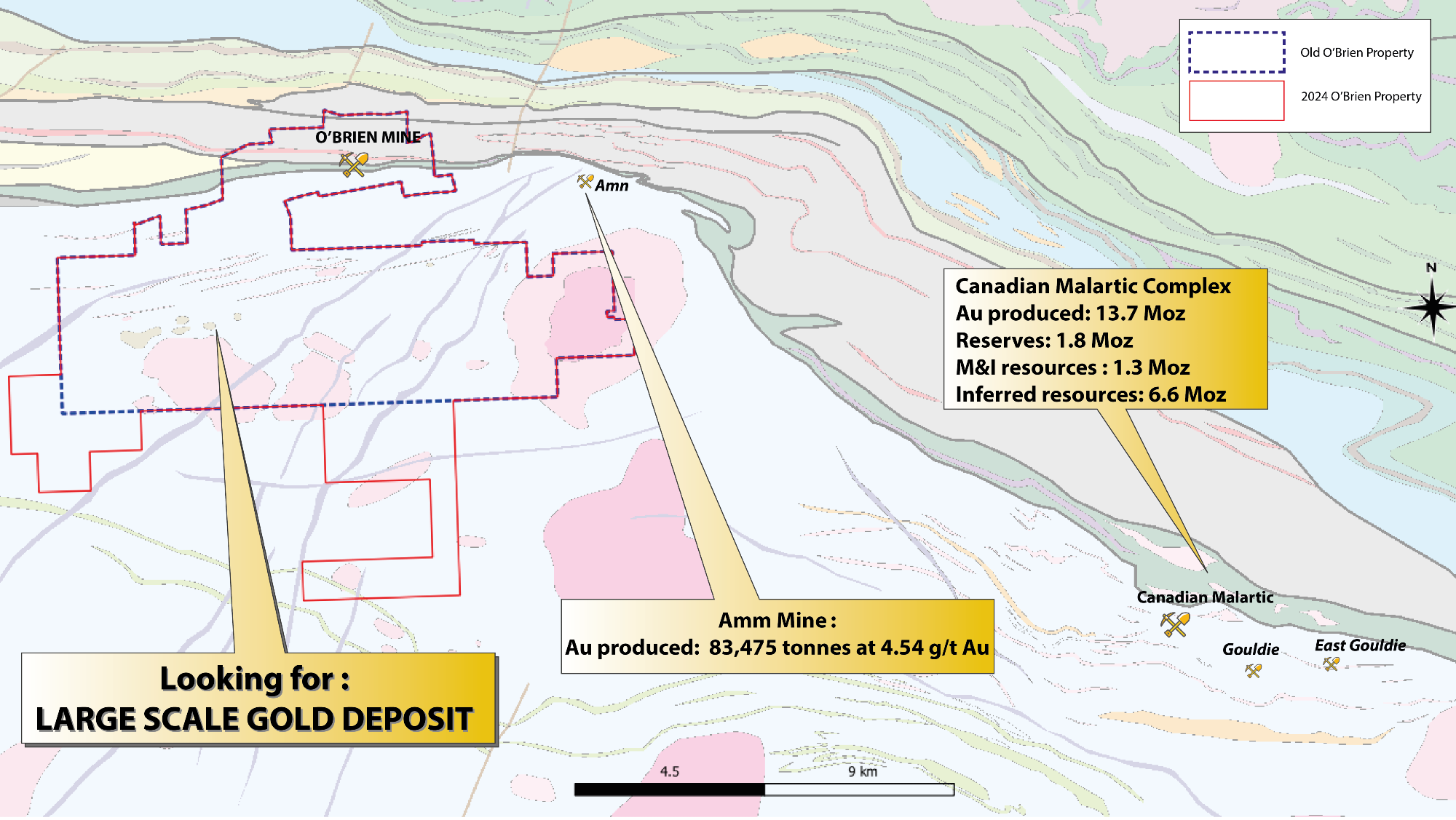Radisson Mining Resources Inc. announced findings from the initial stage of a comprehensive glacial till sampling initiative conducted in the southern sector (New Alger) of the O'Brien project (O’Brien or the Project) during the 2023 summer. This area exhibits a geological context akin to Agnico Eagle’s Canadian-Malartic Complex.
 Location of the New Alger area in the Pontiac Group sediments Image Credit: Radisson Mining Resources Inc.
Location of the New Alger area in the Pontiac Group sediments Image Credit: Radisson Mining Resources Inc.
Program Highlights:
- 15.5 km2 of additional claims staked, expanding the property to 74.3 km2.
- Brand new target area with more than 2 km strike length with potential for gold discovery identified.
- IOS Services Geoscientifiques analyzed 115 glacial till surface samples.
- Fourteen anomalous samples formed a southward dispersion gold grain tail in the western tier of the property.
We are pleased to share that results from the first phase of our summer 2023 glacial till sampling program at New Alger are very encouraging and have outlined a new target area of interest showing strong potential for gold mineralization over a strike length exceeding 2 km.
Vivien Janvier, Geology Director, Radisson Mining Resources Inc.
Vivien Janvier adds, “A total of 14 anomalous samples with between 10 and 45 pristine gold grains, suggestive of proximal provenance, were located in the western portion of the New Alger area leading us to identify a new highly prospective target area. As a result of these findings, we have staked additional claims and plan to expand our 2024 exploration programs to include detailed prospecting work, trench sampling and, potentially, drilling to better understand the mineralization potential of this new target area.”
In addition to these promising sampling results, we look forward to sharing initial results from the first 5,300 m of our ongoing drill program, currently focused on adding ounces to the existing resource estimate at O’Brien, in the coming weeks.
Vivien Janvier, Geology Director, Radisson Mining Resources Inc.
Glacial Till Sampling Program Explainer
With a geology similar to that of New Alger, the Canadian-Malartic Complex is a component of the Pontiac Group of sediments and is home to one of the greatest gold mining operations in the world, producing almost 13.7 million ounces of gold.
The substantial potential for gold mineralization within the Pontiac Group is highlighted by the association of the gold mineralization in this area with dykes, shear zones, and porphyry intrusions. To find regions endowed with gold, the Radisson geology team initiated a preliminary glacial till sample study.
The idea is that during the last Wisconsinian glacial period, glacier movement damaged bedrock and auriferous zones, causing the gold particles within them to drift southward.
Three sample profiles were included in the survey at the south end of the property to intercept the possible deposit's dispersal located north and next to the Cadillac break. An unusual gold grain tail was found on the western part of the land.
Since the O'Brien deposit dispersion was not found in the sampling profile, the length of the dispersion is thought to be restricted to the property's border, or around 2 km. Because of the limited outcrops, the area has not been thoroughly investigated. These highly intriguing results call for more thorough exploration to determine whether more discoveries could be made.
About New Alger
Situated next to numerous productive geological features, the 74 square km2 land package known as New Alger has a high potential for gold. A sample of 7.33 grams of gold per ton was taken in 2022 during a prospecting campaign, suggesting that at least one gold-rich zone is present in the area.
The geological features of New Alger bear similarities to those of past and contemporary mines in the region, including the presence of intermediate to felsic dykes, intrusions, and potentially prolific shear zones. The Amm Mine, which yielded an estimated 219,000 tons of ore reserves and extracted 83,475 tons at 4.54 g/t Au between 1939 and 1942, continues into this area.